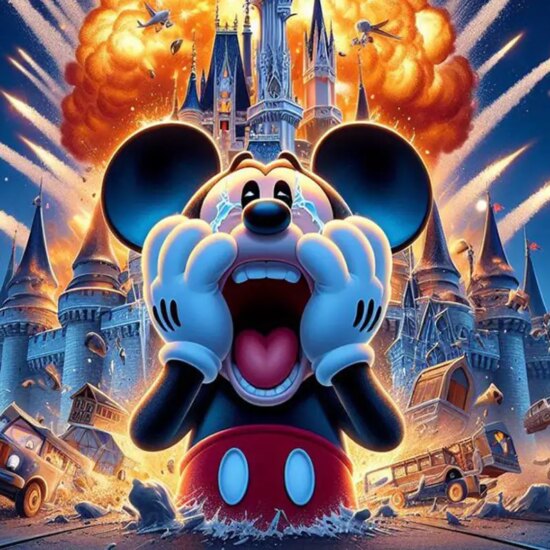
Films have always been the stuff of magic. They’re portals to whole new worlds. They’re a refuge from the world’s troubles. They’re the visible expression of the filmmaker’s soul, the manifestation of the crew’s loving craft.
Yes, films are all this and so much more. As the ideal amalgamation of art and science, films are capable of simultaneously unleashing and taming the awesome capacities of technology in breathtaking new ways.
The union of filmmaking and technology has perhaps never been more powerful or more important than it is today. Indeed, the ascendancy of digital technology is radically transforming all aspects of filmmaking, from how movies are made to how they are marketed to how they are experienced by audiences. This article examines the profound impact of digitalization on the film industry.
Slashing Costs and Streamlining Production
Advances in digital technologies are revolutionizing filmmaking across the entire project lifecycle, from production to editing to release. Not only are today’s digital cameras far less costly than traditional film, but they’re also lightyears ahead of them in functionality.
For example, digital cameras are now equipped with features that would have been prohibitively expensive, if not wholly unimaginable, just a few short years ago. Common capabilities include, for example, virtual and augmented reality (VR/AR) and ultra-high resolution functions to create an immersive audience experience like no other.
But it’s not only in the quality of the production process that filmmakers are using digitalization to bring their craft to the next level. Digital technologies are also making it possible to condense post-production and editing processes.
Filmmakers can, for example, add special effects or correct errors in real-time, significantly reducing, if not entirely eliminating, post-production editing and the need for reshoots. This results in an accelerated time-to-release schedule and a substantial reduction in production costs.
Democratizing Filmmaking
The increasing affordability and availability of state-of-the-art digital filmmaking equipment don’t only mean more and better films made at a lower cost for the major studios. Perhaps even more importantly, it means significantly more access to the art by filmmakers without the immense resources of the production companies.
Indeed, digitalization may well prove to be the great equalizer in film, allowing voices that would once have been silenced due to lack of funding to be heard at last. And it’s not just the proliferation of affordable digital cameras that is ending the marginalization of independent filmmakers.
Other ubiquitous technologies, such as drones, are helping filmmakers achieve their artistic vision without paying a king’s ransom. This means that filmmakers, at last, produce a visually stunning product, even on a shoestring budget.
The Power of Streaming
In addition to streamlining production schedules and slashing costs, digitalization is also transforming how films are promoted and distributed.
The breathtaking popularity of social media has truly opened up the global market. This means that, through social media, filmmakers can promote their films to audiences literally around the world–and often at little or no cost. And this means that more of the marketing budget may be put toward production.
For instance, social media can be the ideal platform to release the film’s trailer, using a staggered strategy to truly prime the audience. Because most social media users visit their preferred platforms multiple times a day, staggering trailers enable filmmakers to generate buzz.
Rather than being consigned to purchasing advertising space through traditional channels, filmmakers can capitalize on the ongoing audience access enabled by social media. And this means they can use the best techniques of storytelling to hold the audience’s interest by sustaining and building the drama through staggered trailers.
Marketing is only one aspect of the role of social media in film’s digital revolution. Particularly in the aftermath of the COVID-19 pandemic, film distribution has increasingly shifted to online media.
Small studios and independent filmmakers are increasingly looking to digital platforms to sell their films to distributors and target audiences alike. The proliferation of high-quality content online promises to decrease the major studios’ chokehold on the industry and open the field to small independents.
At the same time, it significantly expands audience access as well. Those who might once have been excluded by a lack of physical access to a theater can now enjoy the magic of film from the comfort of home. And, in the process, audiences and filmmakers, now liberated from the intercession of the major studios, can build more engaged and more interactive relationships than ever before.
Conclusion
It has been said that the golden age of film passed more than half a century ago. However, digitalization may well usher in a new golden age. Through the advent of digital technologies, production has achieved a level of cinematic quality previously unimaginable. At the same time, production costs and times-to-release have been slashed. This has served to democratize filmmaking, opening the art to more small studios and independent filmmakers than ever before. Likewise, the rise of social media has transformed the ways that films are marketed and distributed, enabling filmmakers, at last, to reach a truly global audience.
Amanda Winstead is a writer from the Portland area with a background in communications and a passion for telling stories. Along with writing she enjoys traveling, reading, working out, and going to concerts. If you want to follow her writing journey, or even just say hi you can find her on Twitter.














